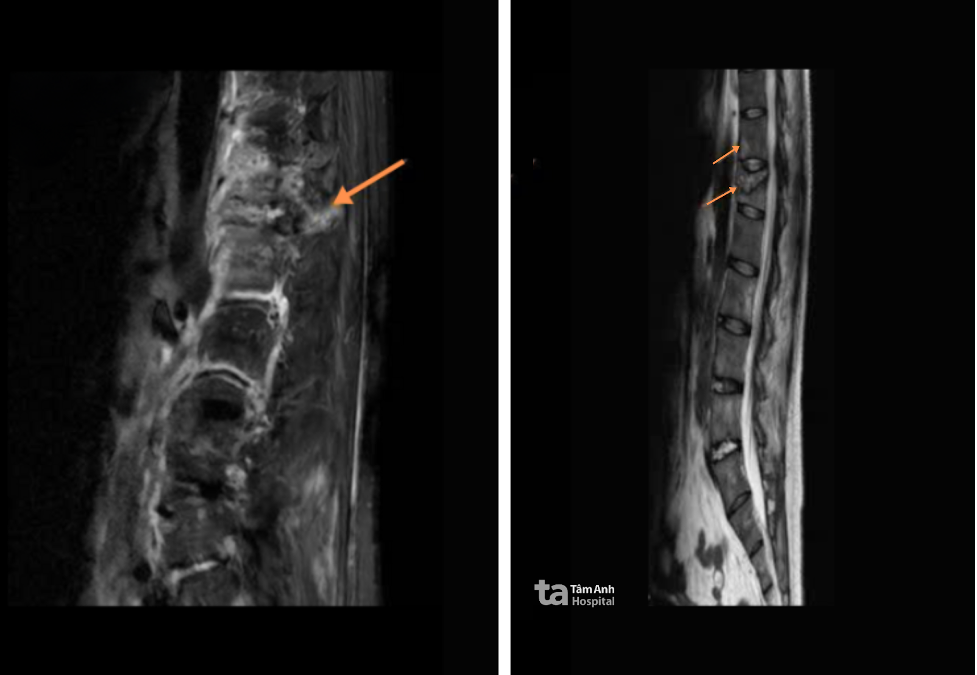Thanh, who had been suffering from a herniated disc for years, didn't seek medical attention after falling from a hammock. Recently, when the pain intensified, he visited Tam Anh General Hospital in Ho Chi Minh City. Doctor Chu Tan Si, Head of Neurosurgery at the Neuroscience Center, suspected a severe spinal injury. An MRI scan revealed a collapsed thoracic vertebra, bone marrow edema, posterior protrusion, and lumbar spondylosis.
"With a pre-existing herniated disc, his spine was more vulnerable to injury from the impact of the fall," Dr. Si explained, adding that Thanh's continued daily activities without seeking medical advice worsened the vertebral compression fracture. Without intervention, further compression could lead to spinal deformity, irreversible spinal cord and nerve root damage, and potential paralysis.
 |
The MRI scan reveals Thanh's compressed T12 thoracic vertebra. Photo: *Tam Anh General Hospital* |
Dr. Si recommended vertebroplasty, a minimally invasive procedure that injects bone cement to stabilize and restore the damaged vertebra, and alleviate pain. This procedure is commonly used for compression fractures caused by trauma or osteoporosis.
Under local anesthesia and guided by X-ray imaging (C-arm), a needle was inserted through the pedicle into the affected vertebra. Bone cement was then injected, solidifying within 30 minutes to restore the vertebra's shape, stability, and function.
Three days later, Thanh was able to walk and resume normal activities without complications. He was discharged with instructions for home-based rehabilitation exercises and started treatment for osteoporosis to prevent future fractures. He was advised to avoid impacts, falls, and heavy lifting, adhere to his physical therapy regimen, and attend regular follow-up appointments.
 |
A technician guides Thanh through rehabilitation exercises before his discharge. Photo: *Tam Anh General Hospital* |
Dr. Si advised individuals with a history of spinal conditions or osteoporosis to be cautious of unsafe postures during daily activities and rest, such as lying in hammocks, and to avoid carrying heavy loads. He emphasized the importance of seeking prompt medical attention for persistent back pain, leg weakness, or limited mobility, especially after falls or injuries, to ensure timely diagnosis and treatment and prevent serious complications.
Phuong Thy
*The patient's name has been changed.
| Readers can submit questions about neurological conditions here for doctors to answer. |












